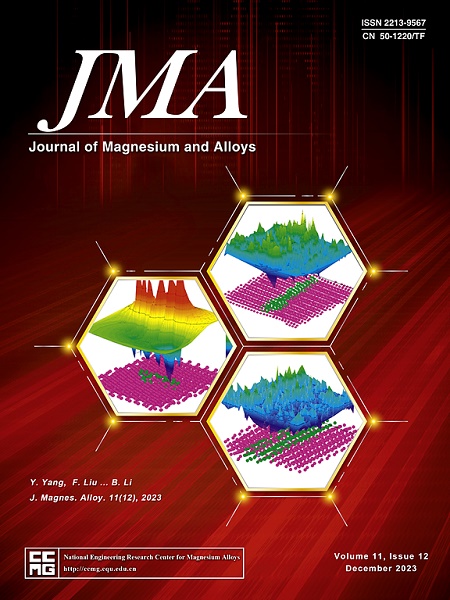拉伸过程中细粒镁-3Gd 的变形机制演变及其取向依赖性
IF 15.8
1区 材料科学
Q1 METALLURGY & METALLURGICAL ENGINEERING
引用次数: 0
摘要
本文章由计算机程序翻译,如有差异,请以英文原文为准。
Evolution of deformation mechanisms and their orientation dependence in fine-grained Mg-3Gd during tension
Magnesium alloys usually exhibit poor ductility attributed to their intrinsic hexagonal close-packed (hcp) structure, which fails to provide sufficient independent slip systems for homogeneous deformation. Here we demonstrate that multiple deformation mechanisms can be activated with increasing tensile strain in a fine-grained Mg-3Gd with a weak basal texture. 〈c + a〉 slip, tension twinning and compression/double twinning exhibit a high orientation dependence at an early stage of deformation, whereas the orientation dependence becomes less obvious with further increasing strain. The high work hardening rate at the strain of 2%–5% is accompanied by the significant increase of 〈c + a〉 slip and tension twinning activities. The fine microstructure strongly restricts the activation and growth of twinning, resulting in a slow exhaust of tension twinning and thin compression twins. The restriction of twinning and the activation of profuse 〈c + a〉 slip near grain/twin boundaries, relaxing the stress concentration, sustain the homogeneous deformation to a high strain.
求助全文
通过发布文献求助,成功后即可免费获取论文全文。
去求助
来源期刊

Journal of Magnesium and Alloys
Engineering-Mechanics of Materials
CiteScore
20.20
自引率
14.80%
发文量
52
审稿时长
59 days
期刊介绍:
The Journal of Magnesium and Alloys serves as a global platform for both theoretical and experimental studies in magnesium science and engineering. It welcomes submissions investigating various scientific and engineering factors impacting the metallurgy, processing, microstructure, properties, and applications of magnesium and alloys. The journal covers all aspects of magnesium and alloy research, including raw materials, alloy casting, extrusion and deformation, corrosion and surface treatment, joining and machining, simulation and modeling, microstructure evolution and mechanical properties, new alloy development, magnesium-based composites, bio-materials and energy materials, applications, and recycling.
 求助内容:
求助内容: 应助结果提醒方式:
应助结果提醒方式:


